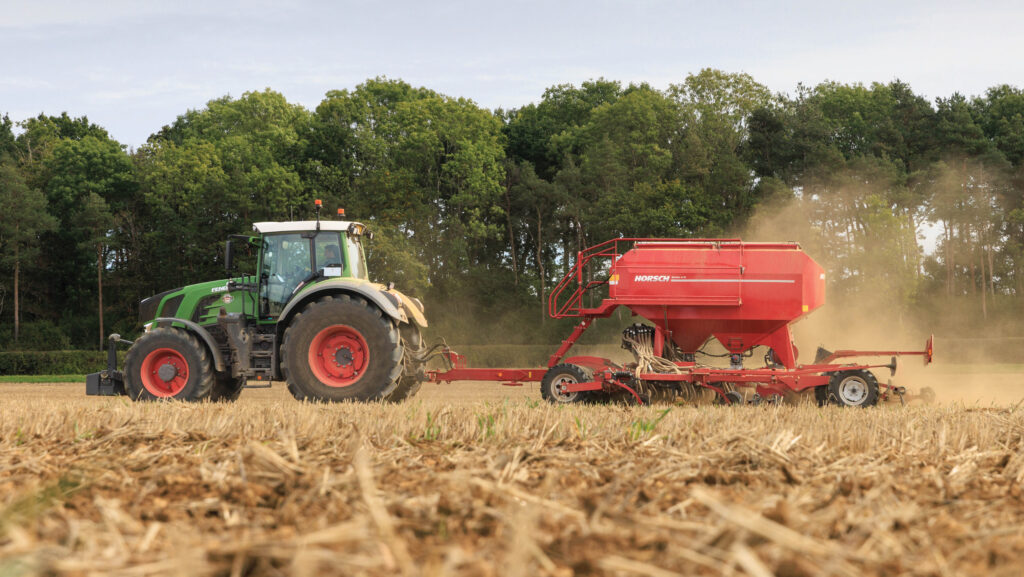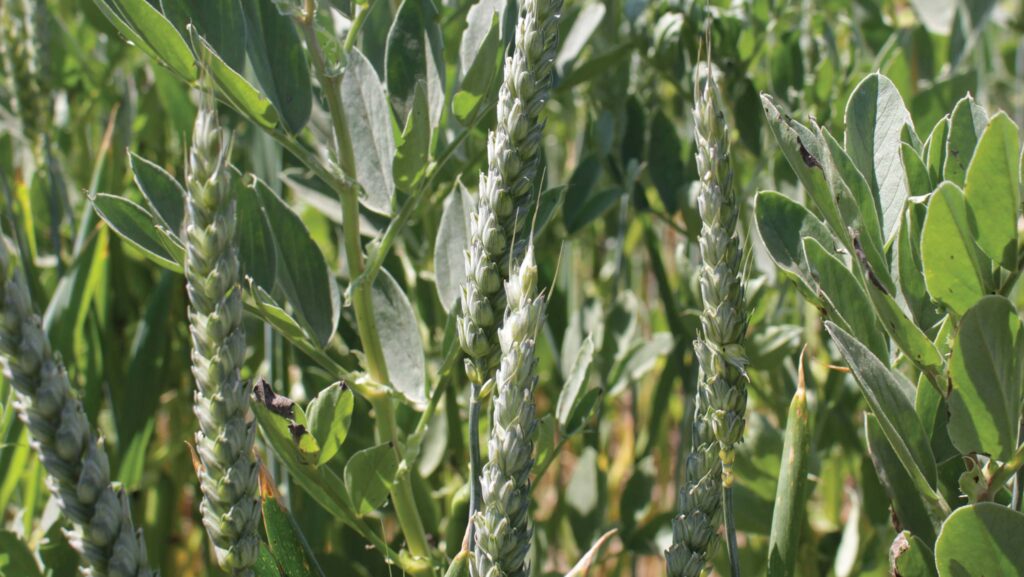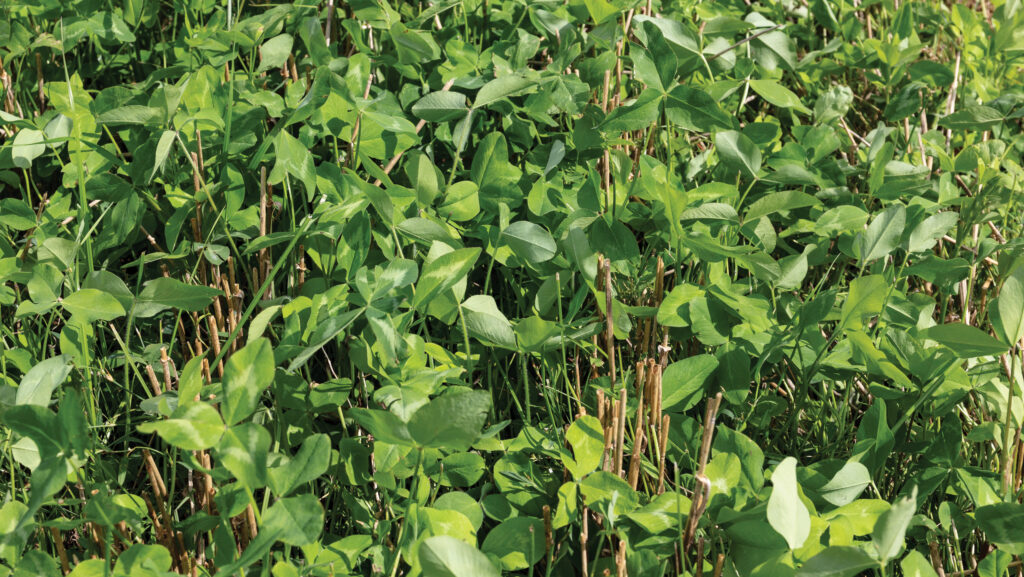How to companion crop successfully in winter wheat
 © Tim Scrivener
© Tim Scrivener Companion cropping is an emerging practice that is recognised in the Sustainable Farming Incentive (SFI) with an action that attracts a payment of £55/ha.
In its most common form, it involves sowing the companion crop with the main arable cash crop and then either removing the companions in the following spring or taking them through to harvest.
Other forms include trap cropping and under-sowing or living mulches – both of which can be used in a range of crops and are included in Defra’s definition of companion cropping.
The SFI action, CIPM3, can be either rotational or static, meaning its location can be moved for the second and third years of an agreement, or it can remain in the same place for the three-year duration.
See also: Suffolk grower sees harvest success with BYDV-resistant wheat
According to Defra, the purpose of this action is to support an integrated pest management approach, provide habitat for birds and invertebrates, manage nutrient efficiency and protect the soil, as well as improving soil condition.

© MAG/Richard Allison
Companion species
For winter wheat growers tempted to try the technique this autumn, Hutchinsons head of agroecology Ed Brown says there are two obvious species that work well as companions.
“They need to fit in with the crop in terms of sowing window and pre-emergence herbicide use, so winter beans and linseed are the two main contenders for winter wheat,” he says.
“When it comes to herbicide use, it’s important to distinguish between approval and crop safety, especially if you intend to take the companion through to harvest.
“The herbicide must be approved for use on the companion if you intend to harvest it.”
Satisfying the aims of the SFI action is essential, stresses Ed, who highlights that the companion crop must be established and grown with the main arable crop, usually until the spring.
Companion cropping in winter wheat
- Linseed or winter beans
- Check herbicide use
- Keep the seed cost down
- Keep it simple
- Avoid sites with heavy grassweed pressure
Companion removal
“It doesn’t have to be there for the whole of the growing season,” he says.
“In practice, this often means until early April, when broad-leaved weed control is required. In most situations, that application takes out the companions too.”
Removing them in this way means there is no yield impact on the cash crop or extra cost involved, he adds.
Growers who are not concerned about weed competition can leave the companions in the field if they prefer.
“Much of what we know about companion cropping is based on what’s been tested in a field situation, rather than on independent trials or research,” says Ed. “There’s been plenty of trial and error.”
Seed rates
Companion seed rates will depend on what the grower is trying to achieve, but those looking for minimal effort and time could start with 10kg/ha of winter beans and stick to their normal seed rate for the winter wheat.
“You can increase it from there – we’ve gone up to 40-50kg/ha of beans in the past,” says Ed. “The seed cost is around £12/ha in that case.”
When it comes to drilling, there are various options and much will depend on the machinery available.
The seed can be mixed in the same hopper and drilled at the same depth – with a preference for the deeper end of the cereal depth – or it can be split between hoppers and metered out separately.
“An alternative is to drill the beans first and then drill the wheat over the top, but that’s the least preferable option,” advises Ed. “It involves two passes at what is already a very busy time of year.”
If linseed is the companion, the same drilling advice applies. “There’s flexibility with the seed rate, but don’t go too high. Using home-saved seed helps to keep the cost down.”
Agronomy
Once the crop is up and away, the main consideration is herbicides. Having beans or linseed as companions will affect herbicide choice, with contact materials largely being ruled out.
“Most of the pre-emergence herbicides will be fine, but remember that there is a difference between being safe to the crop and being approved for use on the crop,” says Ed.
Other agronomy is unchanged, he says, with fungicides and trace elements being used according to need.
Growers who want to harvest the companion as well as the cash crop will need to re-think seed rates and push the companion seed rate higher.
“It is possible to harvest a winter wheat and winter bean crop and you can get a decent yield outcome,” he reports.
“You will need to push the seed rate of the beans and possibly reduce the winter wheat seed rate if you want to get a balance of both.”
What about clover?

© Blackthorn Arable
Clover is another good option as a companion, albeit a more expensive one, notes Ed Brown.
“It works well, but it can’t be drilled with winter wheat in the autumn as that is too late for the clover to establish successfully.
It has to be established in the summer prior to wheat drilling or alternatively broadcast or inter-row drilled in the standing wheat in the spring.”
To this end, moisture and seed-to-soil contact are essential. Having lots of trash on the soil surface can create difficulties, so his experience is that it works best where cultivations have taken place.
Growers also have to consider whether annual or perennial clovers should be used, he adds.
“If the clover is already there, perhaps from a previous cover crop, you can drill winter wheat into it and have an undersown crop.
The risk is that you can find a higher amount of green in the bottom of the crop at combining.”
Ed says Hutchinsons will be conducting a white clover trial this year, to give more insight on herbicide choices.
Vetches are another possibility as a companion, but their use in winter wheat is very limited by herbicide choice.
“We’ve seen it work well in winter oats, where pre-emergence herbicides are off the table. It has to be knocked out in April,” he says.

